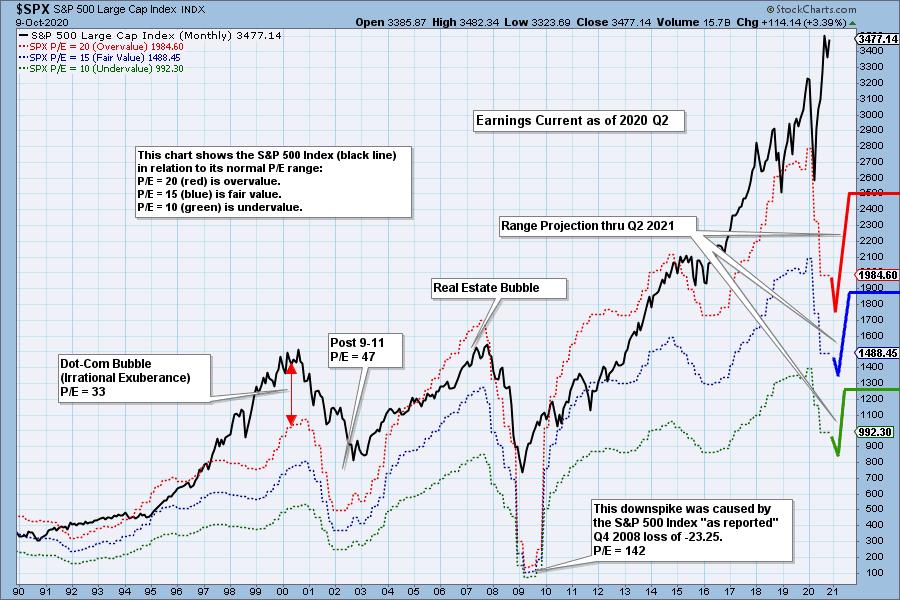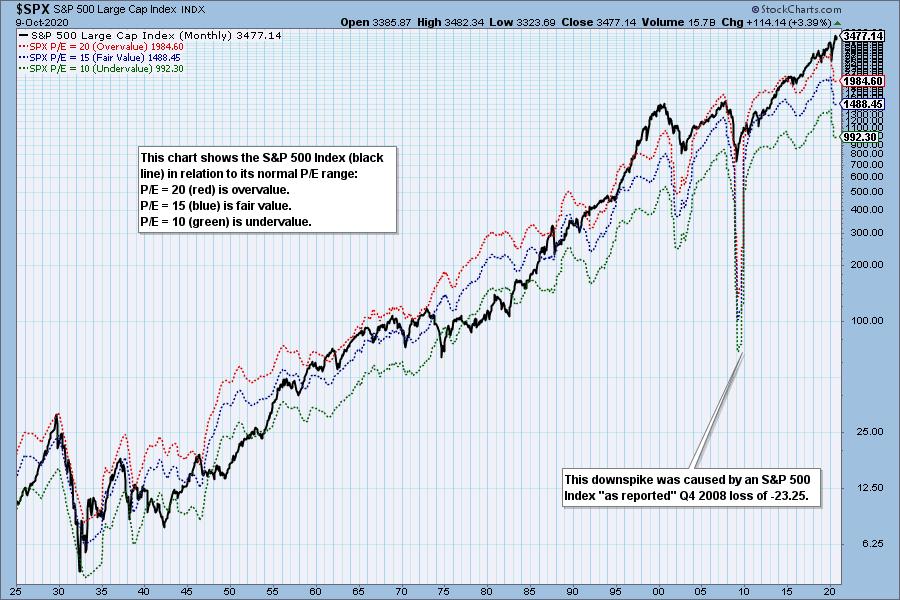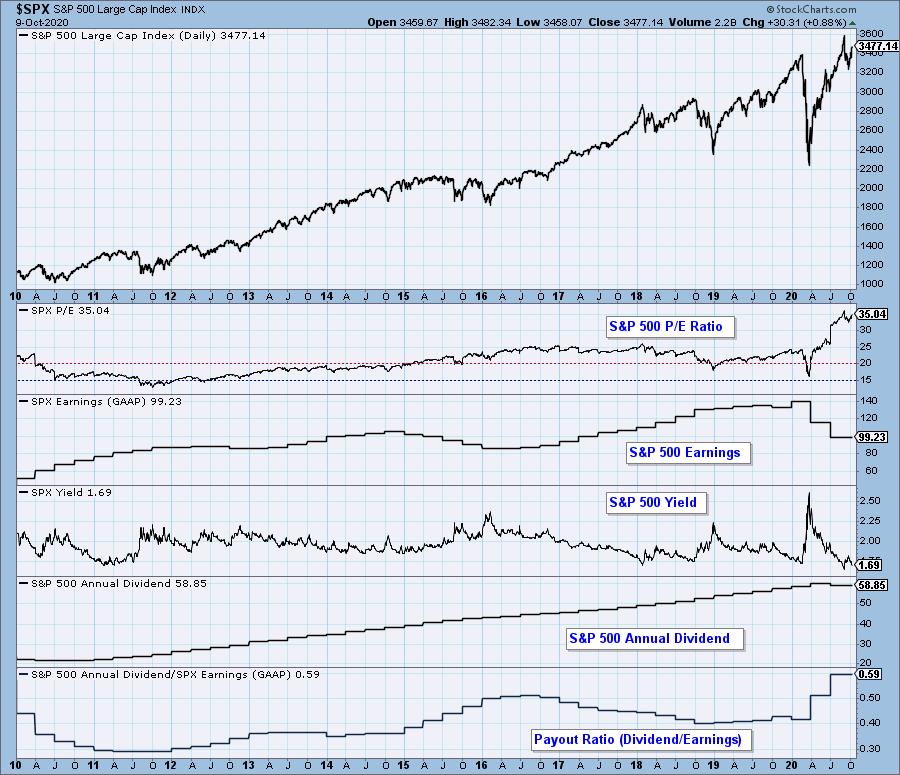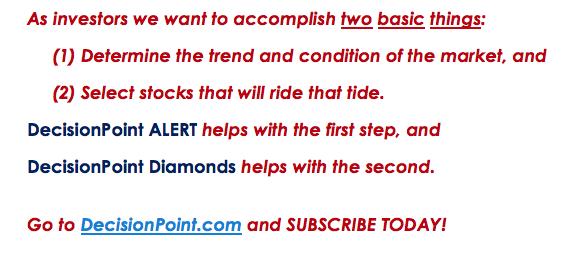
As a new earnings season begins, let's look at the finalized results of the last earnings period. The S&P 500 earnings results for 2020 Q2, based upon GAAP earnings (Generally Accepted Accounting Principals), show that the S&P 500 is, as usual, far above the top of its normal value range. Overvalued. The following chart shows us the normal value range of the S&P 500 Index, indicating where the S&P 500 would have to be in order to have an overvalued P/E of 20 (red line), a fairly valued P/E of 15 (blue line), or an undervalued P/E of 10 (green line). Annotations on the right side of the chart show where the range is projected be based upon earnings estimates for the next four quarters, through 2021 Q2. The range is expected to hit a low at the end of this year. Keep in mind that the massive improvement projected by 2021 Q2 is "seen through a glass more darkly" than usual.

Historically, price has usually remained below the top of the normal value range (red line); however, since about 1998, it has not been uncommon for price to exceed normal overvalue levels, sometimes by a lot. The market has been mostly overvalued since 1992, and it hasn't been undervalued since 1984. We could say that this is the "new normal," except that it isn't normal by GAAP standards.

We use GAAP earnings as the basis for our analysis. The table below shows earnings projections through March 2021. Keep in mind that the P/E estimates are calculated based upon the S&P 500 close on October 9, 2020. They will change daily depending on where the market goes.

The following table shows where the colored bands will be, based upon earnings estimates. I'm trying something different this quarter by showing what the estimates were last quarter. (2021 Q4 is absent because they weren't estimating it three months ago.)

This DecisionPoint chart keeps track of S&P 500 fundamentals, and P/E and yield it is updated daily, not that you need to keep that close a track of it, but it is up to date when you need it.

CONCLUSION: Overbought and overvalued are not the same. Overbought means that price has been driven higher by heavy buying. Overvalued means that people are paying too much for stocks based upon traditional valuation measures. Overbought markets tend to correct their errors through the ebb and flow of buying and selling. The excess of overvalued markets can persist for years and is not a condition that applies immediate pressure for correction. Overvaluation is, however, a condition that can exacerbate declines because there is no intrinsic "value" present to incentivize potential buyers. Or, for one reason or another, it suddenly begins to matter. In other words, it may seem irrelevant at the moment, but one of these days it's going to bite us in a very uncomfortable place.
Technical Analysis is a windsock, not a crystal ball.
Helpful DecisionPoint Links:
DecisionPoint Alert Chart List
DecisionPoint Golden Cross/Silver Cross Index Chart List
DecisionPoint Sector Chart List
Price Momentum Oscillator (PMO)
Swenlin Trading Oscillators (STO-B and STO-V)
120







